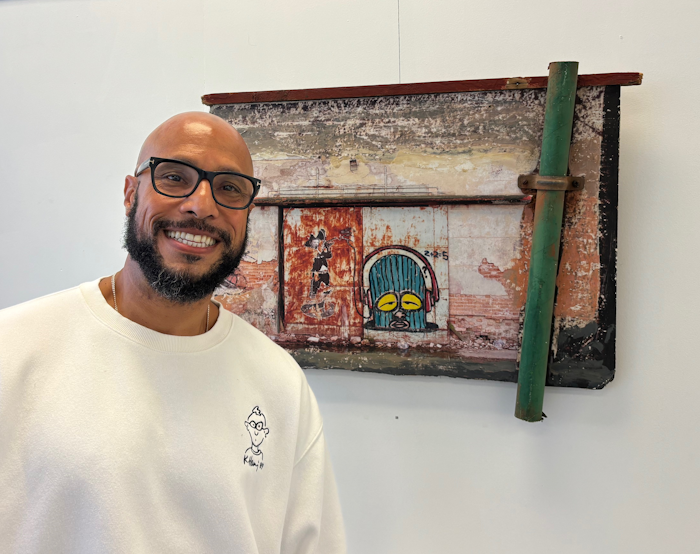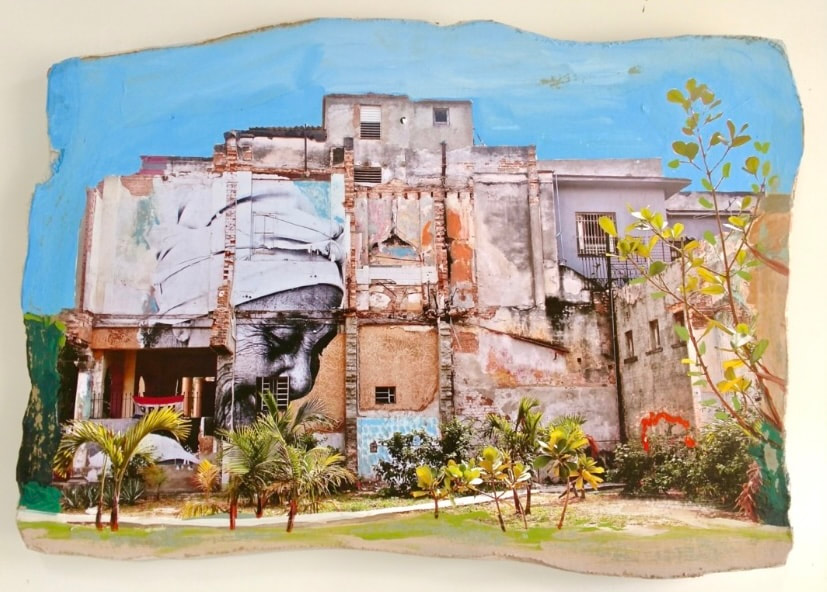Beacon exhibit showcases country’s muralists
In Cuba, pedestrians avoid the sidewalks and stroll in the streets because a hunk of building could rain down on their heads.
The country’s infrastructure is falling down, says Frank Mesa, owner of the Changolife Arts Gallery in Beacon, which specializes in Cuban art. “But the main asset is the people. They’re creative and love the arts,” he says.

Bringing beauty to the blight, Cuban muralists blanket the crumbling walls with imaginative works grand and small, creating a riot of styles that stray far beyond the graffiti-esque pieces and throw-ups many Americans equate with impromptu street art.
Rhinebeck artist Franc Palaia toured the country in 2013 and 2018, taking photos that form the meat of the gallery’s current show, Urban Cuba – Cuba Urbano, which continues through Aug. 31.
A chronicler of street imagery since the Basquiat days, Palaia works with multiple media and travels the world taking photos.
“Streets, billboards, signs, all kinds of things, but you get the sense of a country by what’s on its walls, the drop cloths of a society,” he says. “In liberal democracies, you see a lot of wild, crazy stuff. If the walls are spotless, it’s usually a dictatorship.”
Cuban street artists smash that maxim. Colors burst. Pink is popular. Many works convey a cartoonish viewpoint, including “Rusty Mural” and “Double Story,” though Palaia has manipulated the surfaces.
Unlike China and North Korea, the internet is uncensored in Cuba, “so [street artists] scour social media and see what’s happening in other countries because they feel left out,” he says. “The styles and techniques are all over the place.”

Discernable patterns are rare. The main monolith in “Green Scraffito” is a scratched-up wall, similar to the way vandals (or artists) etch patterns into glass and plastic panels on the subway.
Using special archival glue, Palaia affixes the photo prints onto backgrounds designed to resemble the deteriorated surfaces covered by the original murals, including sheetrock, plywood, polystyrene and cement board.
In one attempt to replicate the dilapidation, he transformed a featherweight piece of Styrofoam into something that looks like a disfigured chunk of concrete and, somehow, a small house with a face (taken from a mural) covering one side.
Cuban’s street artists conjure “surprisingly strange imagery, but nothing is hard-edge political,” he says. It’s rare to find Che Guevara’s mug out and about, but one piece includes his famous visage topped with a beret. It already sold.
Some images on display convey subtle forms of resistance, says Mesa. One work states “These Eyes Realize Real Lies” in elaborate English script.
A familiar figure found on the walls of Havana wears a green ski mask pulled over radiant yellow eyes, sometimes dons red headphones and is always accompanied by the equation 2 + 2 = 5.
Mesa, a Metro-North employee with a bachelor’s degree in Africana Studies, established the gallery last year. His father, Francisco, a confidant of Fidel Castro in the 1950s, renounced the revolution after the future dictator embraced Communism in the later stages of his successful coup against autocratic U.S. puppet Fulgencio Batista.
Francisco’s brother, a prominent judge, hid him until the great escape in 1961, then went from the bench to a prison cell for 12 years. In 1966, Mesa’s father reunited with his wife, Martha, in Elmhurst, Queens.
They’re the only members of the family to leave the country, so a special visa lets Mesa visit kin, which he does often. During trips, he scouts for artistic talent.
The vibe inside Changolife, a former classroom at the old Beacon High School (now the Kube Art Center), is chill. Two black couches and a black curtain around the kitchen and storage area punctuate the gray and white space with huge windows.
Chango, the gallery’s namesake, is a raunchy, syncretic Cuban deity who loves music and dancing. Next to one of the couches stands a table topped with a black and white photo of Mesa’s parents in their homeland. Underneath sits a curated collection of rum and cigars.
Mesa, 54, a newcomer to the fine art world, is a guy with a sharp eye and the gift of gab who wants to “bring something different to the valley.” For obvious reasons, Cuban culture is underrepresented in this country and he seeks to increase its exposure.
His first exhibit featured three artists. Then he presented works by Sheyla, 20, whom he calls “a star on the rise.” He’s doing something right: She just landed larger exhibits in Madrid and West Palm Beach.
“I’m from the hip-hop generation,” says Mesa. “We make it all up as we go along.”
ChangoLife Arts is located in Room 308 at the Kube Art Center, 211 Fishkill Ave., in Beacon. See changolifearts.com. Franc Palaia will discuss Cuban murals at 7 p.m. on Friday (July 19); RSVP to changolifearts@gmail.com. The gallery is open from 1 to 6 p.m. Saturdays, or by appointment. Call 646-382-3383.

